Downloads Revamp
Information Hub
Brochures
Overview
Products
Video Telematics
GPS Tracking
Data & Analytics
Case Studies
White Papers
Blogs
MiX by Powerfleet
Contact us
- Created on .
- Hits: 2274
Telematics is cutting-edge technology that merges telecommunications and informatics to revolutionize the way you collect and transmit data from vehicles and remote objects. Say goodbye to guesswork and hello to real-time insights that will transform your operations.
By seamlessly integrating GPS tracking, wireless communication, and advanced computer systems, telematics empowers you to unlock vital fleet information – from precise location and speed to fuel consumption and vehicle diagnostics. With this wealth of telematics data at your fingertips, you can optimize your operations, boost safety, and supercharge efficiency across industries like transportation, logistics, and insurance.
Imagine making informed decisions, monitoring assets, and streamlining processes effortlessly, all while delivering superior performance and slashing costs. Embrace the future of business intelligence with telematics and unlock a whole new world of possibilities.
A telematics system consists of devices installed inside the fleet of vehicles. These devices use a cellular network to send information to servers that are hosted by the provider or a third-party cloud server. The data can then be accessed from a device such as a smartphone, tablet, or laptop with an internet connection. This is all made possible by the Global Navigation Satellite System (GNSS).
These developments have caused a boom in telematics for fleet management. Fleet managers use telematics to keep their drivers compliant with the ELD mandate and to help run their fleet operations more efficiently.
Telematics has proven to be invaluable across various sectors. Telematics, which combines telecommunications and informatics, enables real-time monitoring and data collection from vehicles or assets.
In the automotive sector, telematics uses vehicle tracking, fleet management, and driver behavior monitoring, leading to optimized routes, reduced fuel consumption, and enhanced safety. In the insurance industry, vehicle telematics helps in determining personalized premiums based on individual driving patterns.
Moreover, telematics plays a vital role in the transportation and logistics industries, enhancing route optimization, fuel efficiency, and overall operational efficiency. With its wide-ranging benefits, telematics continues to revolutionize industries by providing actionable data and improving decision-making processes.


















A fleet management telematics system includes devices installed in fleet vehicles to transmit, receive, and store telemetry data. These devices connect to a vehicle's onboard diagnostics system or CAN-BUS port using a SIM card and transmit data wirelessly through an onboard modem.
The device gathers GPS fleet tracking data and various vehicle-specific information, which is then sent to a centralized server. This transmission occurs through General Packet Radio Service (GPRS), 4G (soon to be 5G) mobile data, cellular networks, or satellite communication. The server receives and presents this information on a secure website accessible via tablets or smartphones. The telecommunications company handles the information flow between the vehicle and the telematics provider.
The device can capture a range of information including location, speeding, harsh acceleration or braking, idling time, fuel consumption, engine health, and more. Reviewing and analyzing this information provides comprehensive insights across your entire fleet.

Fleet management enables businesses to utilize data effectively for their unique challenges. One common challenge faced by fleet managers is constantly monitoring the location of vehicles and equipment. Many companies have successfully utilized telematics solutions to prevent theft and save substantial amounts of money.
Initially, the technology primarily focused on real-time vehicle tracking through wireless connections. However, it has since evolved to provide additional benefits like enhancing safety, efficiency, and cost savings for fleets.
For instance, telematics technology can be employed to develop a fleet safety initiative aimed at creating a safer and more responsible fleet. It can help address significant issues such as reducing speeding incidents, harsh acceleration and deceleration, and overall accidents across the fleet.
Vehicle telematics also offer a substantial return on investment (ROI) in various areas, including:

When a telematics device is installed in fleet vehicles, it enables the tracking and reporting of various details such as speed, braking, idling, tire pressure, and fuel usage. This information helps monitor vehicle health and driving habits across the fleet.
By utilizing this data, maintenance costs can be reduced, fuel efficiency can be improved, and driver training programs can be created. To track assets, the device is connected to the fleet vehicles' CAN-BUS port or OBD II, and it includes a SIM card and modem for wireless communication via a wireless network. Access to fleet management software is available through smartphones, laptops, or tablets.

Telematics, the fusion of communication and data processing, originated in the 1960s to enhance battlefield communication for military purposes.
The contemporary telematics we rely on today emerged from three crucial advancements: Internet, GPS, and machine-to-machine communication. With the advent of the Internet and the expansion of telecommunication networks, the utilization of telematics for fleet management experienced significant growth, enabling real-time data transmission.

A telematics system consists of various components that work together to enable efficient and reliable communication and data exchange between vehicles and a centralized system.
The key components of a telematics system include a GPS (Global Positioning System) receiver to track the vehicle's location, an onboard diagnostics unit (OBD-II) to collect data from the vehicle's sensors and systems, a cellular or satellite communication module to transmit and receive data, and a central server or cloud platform to process and store the collected information. These components allow for real-time monitoring of vehicle performance, location tracking, remote diagnostics, and the delivery of valuable insights for fleet management, vehicle safety, and optimization of operations.

These devices can be easily set up by users themselves or by a professional technician. Regardless of the method chosen, the setup process is straightforward and fast.
The power needs of these devices can differ, as some are battery-powered while others rely on the vehicle's internal electrical system.
A basic GPS tracking telematics solution is affordable but provides limited useful information. However, investing in a comprehensive telematics system with dash cams, electronic logging devices (ELDs), route planning, and advanced driver management can yield a higher return on investment. One example of such a system is MiX by Powerfleet, which offers customizable features for your fleet's specific needs.
Enhancing visibility of your fleet enables you to understand asset utilization and optimize operations. With customizable dashboards, you can easily track progress towards your chosen key performance indicators (KPIs), manage your budget, and access real-time analytics from your telematics system. Implementing a fleet management system can uncover hidden costs and improve efficiency and productivity.

A fleet management telematics system comprises devices installed in vehicles to transmit, receive, and store telemetric data. These devices establish a connection to a vehicle’s onboard diagnostics system or CAN-BUS port using a SIM card. Utilizing an onboard computer, the system wirelessly sends data through a network.
The device collects GPS fleet tracking data and various vehicle-specific details, transmitting it to a centralized server via GPRS, 4G (soon to be 5G) mobile data, wireless networks, or satellite communication. This information is then stored on the server. To access the data, users can securely view it through a website accessed via tablets or smartphones. The flow of information between the vehicle and the telematics provider is managed by a telecommunications company.
The captured data includes location, speeding, harsh acceleration or braking, idling time, fuel consumption, engine health, and more. Analyzing this information provides comprehensive insights for the entire fleet.

Enhance fuel efficiency and cost savings through intelligent route planning. Automate tracking of idling time and vehicle utilization, while also ranking drivers for coaching based on identifying those who require assistance in reducing idling and aggressive driving behaviors. Achieve significant expense reduction by implementing these measures.



Telematics is an increasingly vital part of fleet management, offering benefits in efficiency, productivity, and safety. With advancements in GPS technology and the growing use of mobile devices, telematics is expected to experience further growth. The rapid evolution of the Internet of Things (IoT) has enabled smart homes and communities, exemplifying the progress in this field. As telematics gains momentum, it will continue to evolve, and several emerging trends are worth monitoring.
These trends encompass:
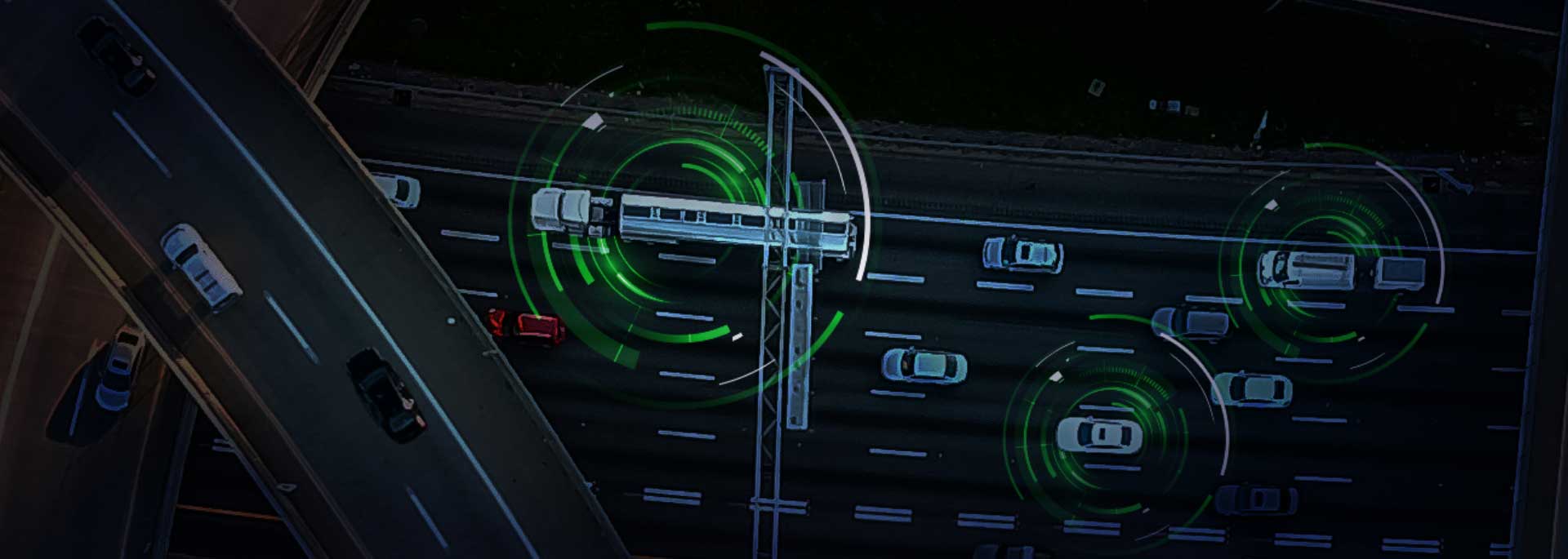










To meet the demands of fleet owners, GPS vehicle systems will enhance integration with other operational systems, such as workforce management software, business management software, and ERP software. Telematics will increasingly become an integral part of fleet management operations.
Telematics Success Stories

British American Tobacco (BAT) is a leading, multi-category consumer goods business that manufactures and supplies cigarettes, tobacco and other nicotine-related products. BAT has been a longstanding customer and partner of MiX by Powerfleet and has been utilizing their fleet management solutions since 2016. By utilizing a variety of MiX by Powerfleet’ tailored fleet management tools BAT has reduced speeding incidents per 100 kilometers driven and harsh braking events by 40% while harsh acceleration events were reduced by 18%. Additionally, BAT has lowered the cost of their insurance premium by 8%
Based in Brazil, ITA Transportes has a large fleet of 1800 vehicles, so they required a telematics solution to gain better visibility of their vehicles and help improve overall performance. After implementing MiX’s solutions, ITA Transportes saw a myriad of great results. Their fuel consumption dropped by 18%, operating costs were reduced by 40% and clutch interventions were lowered by a massive 90%.
Stabilised Pavements of Australia (SPA) is the largest stabilization contractor within the Australasia region. SPA were looking for a telematics suite to assist them in putting the appropriate measures in place to both improve driver behaviors and effectively monitor compliance-related requirements. Within a 12-month period, SPA achieved more than a 40% reduction in speeding incidents, a 35% reduction in harsh braking events (a sign of safer driver behavior) and even a $100k per annum saving in insurance costs.
Fleet management telematics will continue to play a big role for fleets who want to gain a competitive edge. MiX by Powerfleet solutions provide GPS tracking for vehicles and assets, ELD compliance, safety, and security. If you're looking for fleet management telematics software, contact us and we'll be happy to help you find a telematics solution that is right for your fleet.
There’s a lot more to managing a commercial fleet or being a commercial driver than simply moving heavy cargo from point A to point B. DOT fleet compliance is crucial to the safe transport of shipping containers, cars, concrete piping, and more. A compliance inspection can happen unexpectedly at any time, which makes ensuring DOT compliance for your fleet essential.
Here’s a quick review of DOT compliance and the important role it plays in the transportation industry.
Every time the engine starts on a commercial fleet vehicle, it must be in compliance with Department of Transportation (DOT) regulations. These important rules and regulations are enforced by the Federal Motor Carrier Safety Administration (FMCSA). It is vital commercial fleet managers understand them, and the consequences should their fleet vehicles fall out of compliance. Failure to comply can have serious penalties and fines, leading to fleet vehicles being put out of service.
The DOT is responsible for protecting drivers and the public by ensuring the safety and security of the country’s transportation system. When commercial fleets meet or exceed the DOT’s standards, they are considered DOT compliant.

DOT safety standards cover the following:
DOT rules and regulations cover all tuckers and any commercial motor vehicle (CMV) operators in the United States. To be considered a CMV, it must meet one of these criteria:
When recruiting or training drivers, it is essential to remember these rules so that your fleet and drivers avoid fines and other penalties. Here’s a quick review of the key DOT regulations covering trucks and CMV operators. However, this list is not comprehensive. DOT regulatory guidance is often updated, so visit the DOT website for specific details about regulations specific to your industry that are not listed.
Hours of Service (HOS) guidance is a crucial DOT regulation for trucks and CMV operators. Published to the Federal Register in December 2011, the HOS rule gives the FMCSA the power to govern CMV driver’s working hours. Created to eliminate or reduce the number of accidents caused by tired drivers, the HOS governs the amount hours commercial truck drivers and CMV operators can spend driving. The regulation covers the maximum number of hours driven before they are required to take a mandatory rest break.
The electronic logging device (ELD) mandate, effective December 2017, requires trucker and CMV operations to track their HOS with ELDs. These devices connect a vehicle’s engine and record its driving time automatically, offering a reliable method of collecting HOS data. These devices replace the paper logs historically used by truckers to record their HOS.
Any drivers that stray outside of HOS guidelines or the ELD mandate risk incurring fines and penalties that negatively impact their own or their fleet’s safety rating and can cause them to be put out of service.
CMV drivers and truckers must inspect their vehicles each morning before they hit the road and again when their driving day ends. Driver vehicle inspection reports (DVIRs) play a crucial role in fleet compliance. Any safety issues that are documented during these inspections must be repaired or resolved prior to the vehicle getting back on the road.
Vehicle inspections include tires, brakes, lights, axles, steering mechanisms, horns, rear-view mirrors, clutch, electrical connectors, and emergency equipment, to name just a few. Drivers should look for any defects, damage, or deficiencies, and if any are reported, the vehicle must be removed from service until repairs are completed. The driver is required to present proof of repair signed by a licensed repair shop in order for the vehicle to return to service.
DVIRs are an important tool for commercial fleets to use as protection against safety issues and violations. In 2018 over 11,000 commercial vehicles were taken off the road due to failing roadside safety inspections.
Commercial drivers and truckers are required to have many licenses, permits, and registrations in order to operate in the United States. This includes a commercial driver’s license, unified carrier registration, motor carrier authority numbers, and standard carrier alpha codes. Depending on the circumstances, companies with violations related to licensing, permits, and registrations may face fines, suspensions, or criminal charges. Regularly check the DOT website for more details and updates regarding the registration requirements.
When hiring a fleet driver, FMCSA rules require employers to run a safety and background check prior to employment that includes the following information:
In 2017 the FMCSA unveiled the Drug and Alcohol Clearinghouse. This online database was created to help motor carriers find out if a commercial driver is prohibited from doing safety-sensitive jobs due to alcohol or drug use. Fleet companies are required to use this Clearinghouse when checking the pre-employment substance abuse history of potential employees.
DOT drug screening and testing requirements don’t end once a driver is hired. According to United States law, any employee who operates a vehicle as one of their job functions can be tested for drug use in the following circumstances:
DOT fleet compliance mandates that all fleet drivers undergo drug testing upon their employer’s request. A refusal to undergo testing is an offense that can be punished and may even be grounds for termination.
Fleet drivers can be screened for the following substances:
In addition, drivers can be screened for a number of prescription drugs. Drivers whose drug tests turn up positive results without a prescription from a physician, nurse practitioner, or advanced practice nurse (this varies depending on the state), or if the amount found is higher than the prescribed dose, are in violation of DOT rules and can be penalized for it. All positive tests are required to be reported in the FMCSA Drug and Alcohol Clearinghouse.
In the United States, only entities that are registered to do so can receive or ship hazardous materials. And for the shipment to be considered valid, the hazardous materials are required to be described, classed, and packaged in compliance with DOT hazmat regulations.
A business or individual found to have violated these regulations can incur criminal and civil penalties. In addition, employees handling hazardous materials are required to get adequate training on the proper way to handle them, and the dangers should these precautions not be taken. Employers are required to ensure that their training efforts are in accordance with DOT standards.
Cargo is required to be secured during transportation in compliance with FMCSA cargo securement rules. All tie-downs must be securely fastened, wedges and chock must be employed to prevent movement or rolling, and the number of tie-downs must be appropriate to the weight accordance. In addition, loads must not obscure the driver’s vision from the front or the side, and there should be no broken pallets, insufficient wrapping or other packaging issues.
Ensuring that the cargo is insured is not enough to be in DOT compliance. Fleets must also ensure that doors, tailgates, spare tires, and other elements that can become loose or detached while the vehicle is in motion must be securely attached.
Running a DOT-compliant fleet requires a lot of paperwork. This means record-keeping that covers all aspects of DOT compliance. Some of the documents fleets need to have ready in the event of an audit include:
How long a fleet needs to keep these documents varies depending on the kind of record. It is up to the fleet company or employer to make sure that all required records are kept properly filed and readily available in the event of a DOT audit. The list above is not a complete list of all necessary documents. Visit the FMCSA website for more information on recordkeeping requirements.
A deep understanding of the DOT rules is key to ensuring that fleets remain in compliance. Consulting the FAQ section on the FMCSA website will give you comprehensive knowledge of the DOT rules. You can search for topics such as regulations, registration, driver safety, and more.
A DOT compliance checklist can help keep your fleet on track and avoid lapses in compliance. This checklist offers guidelines to ensuring your fleet adheres to DOT standards, but once you are familiar with the regulations, you should create a checklist tailored to your fleet.
Fleet Compliance Checklist
Driver Compliance Checklist
This is just a sample checklist, once you have in-depth knowledge of the DOT regulations, you can use this as a template and make adjustments. Regular review will help minimize the chances of non-compliance.
If your fleet is audited, you want to be sure that your HOS logs are complete, accurate, and easy to access. That’s why the ELD solution you choose is critical. The MiX by Powerfleet ELD solution makes DOT compliance easy and secure. The device captures location data upon ignition, when the engine is turned off when the vehicle moves, and every hour as per regulations.
The ELD can be synced to the vehicle’s engine, and as each driver’s daily status changes, this information can be displayed in a graph or grid format. The data collected can be transferred to enforcement officers via USB, making the entire process fast and easy.
Installing MiX by Powerfleet software in your fleet is an extremely effective way to make sure fleet vehicles receive regular, on-time maintenance. Fleet managers can receive automated alerts and reminders to schedule maintenance, which keeps vehicles running well and in good form for DVIRs.
By using telematics for preventative and predictive maintenance, you can schedule maintenance in advance, so you don’t have to wait for a mechanic or technician to be free. And your fleet vehicles are less likely to fail inspections. You’ll have detailed repair records ready in the event of an audit.
A huge part of fleet compliance is safety and risk management. MiX by Powerfleet offers software solutions that help make your fleet safer. With MiX, you can reduce accidents and avoid fines. Effective risk and safety management help you keep your employees and other motorists safe and in DOT compliance.
With MiX by Powerfleet software, you can store important details about driver performance, insurance information, vehicle repairs, and additional information essential for DOT fleet compliance audits. Being able to pull a report on “near misses” and other events can make audits faster and easier.
If you want to make DOT compliance easier for your fleet, contact us to learn more.
Read more …D.O.T. Compliance Solutions
Reduce your fuel costs and improve fleet
efficiency, utilization and profitability.

Running a successful fleet requires operators to manage the smallest of details to achieve minimum spend and maximum efficiency. Fleets need to be safe, secure, efficient, compliant, and sustainable to reduce costs and increase the bottom line. Fuel spend is one of the highest costs of keeping assets and vehicles on the road.
Standard Bank in South Africa has estimated that the cost of fuel per transaction has risen by 73% between January 2010 and April of this year. David Molapo, the Head of Standard Bank Fleet Management, has said that fleet fuel costs were the biggest single operating expense in fleet management and had contributed to pushing the average cost of running a vehicle to more than R4000 a month. In the USA, fuel spend is ranked at #2 after payroll costs, coming in at 32% of a fleet’s total budget. In the UK, fuel accounts for 20% of the total cost of fleet ownership. With fuel prices at their most volatile worldwide, managing and reducing fuel consumption is a top priority for all fleet operators.

Over speeding, harsh acceleration, harsh braking, excessive idling, dangerous cornering, and distracted driving, such as smoking or mobile phone use, can exponentially increase your fleet fuel costs. Installing MyMix™ and its value-added extension MyMiX Tracking, lets you know if your drivers are driving aggressively and helps you develop a driver training program to target specific performance issues.

Getting drivers from A to B faster and more efficiently means less time spent driving and idling and saves on fuel fleetwide. MiX by Powerfleet’ GPS Fleet Tracking solution can help you plan your routes better.

Tire condition has a significant impact on your fleet’s fuel consumption. Tire temperature influences tire pressure which affects vehicle utilization in turn. It’s a good idea to check your tire pressure if the weather has turned hot or cold. According to the U.S. Department of Energy (DOE), for every one psi drop in tire air pressure, gas mileage is lowered by 0.2%. This is a small percentage saved but adds up to big dollar savings over time.

The heavier trucks are, the more fuel they will use. To save on fuel, make sure your trucks are loaded with equipment and cargo within the maximum payload limit. Payloads and towing capacity will be confirmed on a plate affixed to the sidewall, possibly on the driver’s side door, or in the owner’s manual.
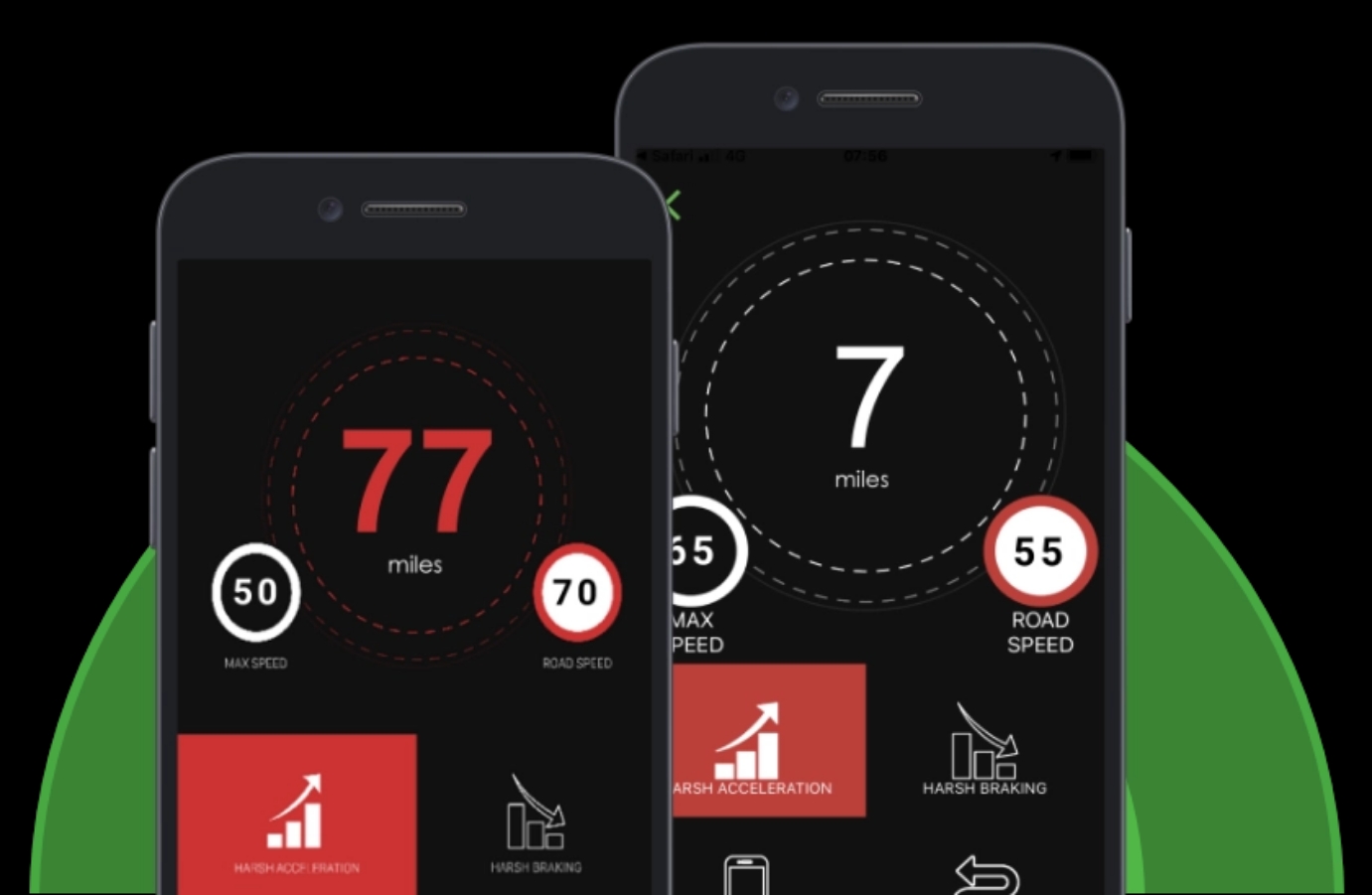
Fleet telematics can help you monitor your fleet’s movements and fuel usage, making sure your drivers are dispatched to jobs close to them, avoiding long distance drives and extra hours spent on the road. You can also ensure that they take the most efficient route and have enough time to travel to the jobsite and attend to the job, so they don’t have to speed. MiX by Powerfleet offers a range of complementary products to enhance MiX Fleet Manager™ and MiX SafeDrive. Add additional value to your telematics solution with a wide range of accessories and services.

A poorly maintained engine burns more fuel. Dirty air filters, incorrect motor oil grade, underinflated and improperly aligned tires, all cause a vehicle’s engine to work harder and less efficiently. With MiX Fleet Manager Essential™, you can automate alerts to better help you stay on top of your maintenance schedule.

Running an air conditioner or heater in-trip, will decrease your fuel economy. You can train your drivers to run both functions responsibly; keeping the air on just enough to maintain a comfortable temperature and using the recirculation feature so that the engine doesn’t work too hard and burn excess fuel.

Fuel is wasted when commercial vehicles are driven for personal use. Company policy should clearly outline which activities company vehicles are allowed to be engaged in. Using a driver ID system, GPS tracking and geo-fencing, you can monitor and reduce unauthorized personal use of your fleet vehicles.

Unless the temperature drops below zero degrees Fahrenheit, engines don’t have to warmup for more than ten minutes. Driver should be trained to let their engines run without revving for no longer than that, improving fuel efficiency

Training programs are key to ensuring that all your drivers are consistently meeting compliance and safety standards. An accident or collision can result in a preventable loss of life and costly vehicle downtime. Bad driving behavior and performance can also increase fuel consumption, raising the cost of fleet operations. With MiX Vision AI, in-cab video footage can be used as part of driver feedback and driver training

Reducing speeding is an easy way to economize on fuel. Over speeding can be flagged by fleet managers to create better driver awareness and training. MiX Fleet Manager™ can help you monitor your drivers’ speed to determine which of them are speeding excessively. Consistent and regular feedback can help keep your drivers’ performing optimally, reducing operation costs, and increasing your bottom line.
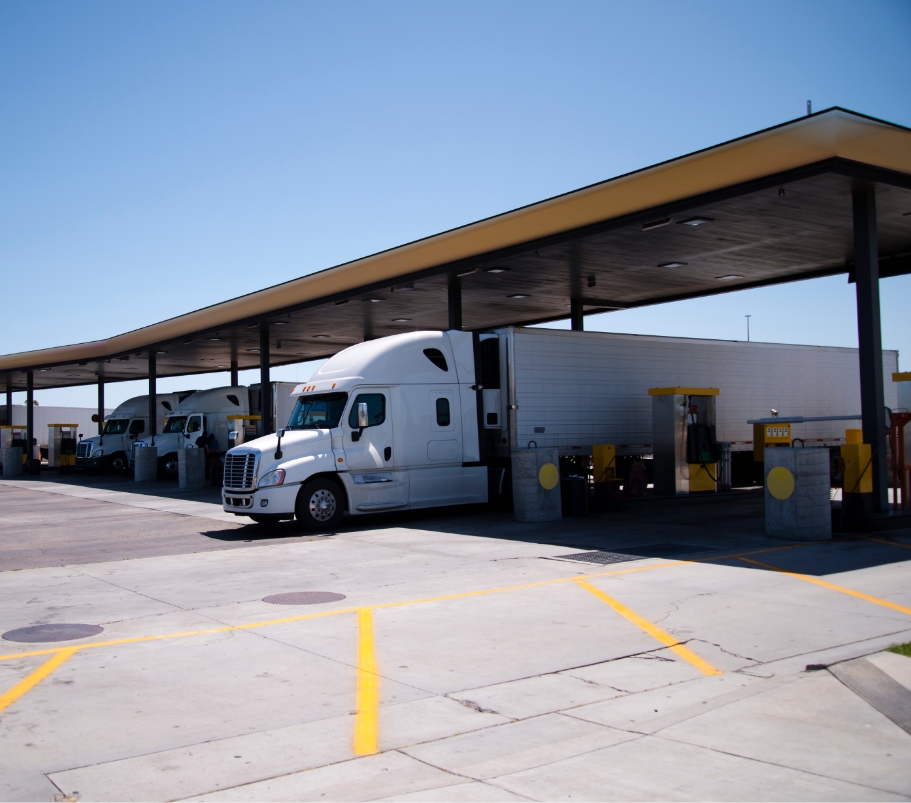
Idling is an inevitable part of driving. Heavy traffic conditions, stopping at red lights, waiting at jobsites, and refueling vehicles at gas stations with the AC running, are all instances in which drivers are idling. Excessive idling is a fleet inefficiency that needs to be monitored and curbed to reduce fuel costs, to help save on fuel. A fleet telematics solution can keep track of excessive idling and help create driver awareness of the issue to better identify when it is avoidable and when it isn’t.

Fuel theft is a prevalent problem for fleets globally. Telematics can help you track and highlight trends. Fleet managers can set up auto-alerts to flag when a vehicle is fueled and where, and parameters that can measure how much fuel is used over a specific amount of time. These measures can help to determine if fuel theft has occurred when a vehicle filled its tank (the amount of petrol pumped and paid for exceeds the tank capacity) or while underway (a full tank empties much quicker than it should).


In the UK, Wincanton plc has reported a 14% decrease in fuel consumption usage.
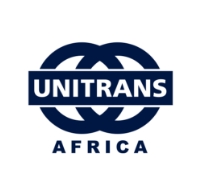
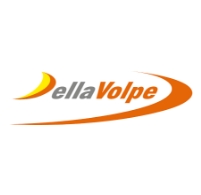
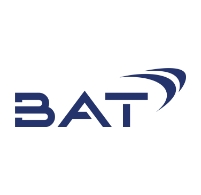
In Australia, British American Tobacco (BAT) achieved fuel savings of 2.05 ROI over an 18-month period.


To read more about how our global customers are saving more fuel and boosting their profits, you can download any of our case studies here. Please don’t forget to select the relevant region in the top righthand corner.
Read more …Fleet Management Glossary
Managing a fleet of vehicles can sometimes seem like herding cats. You’ve got vehicles on the road that need to stay on schedule, adhere to safety standards, and more. As a fleet manager, you need to reduce risks, maximize profitability, and control costs. It’s a big job with many moving parts.
Vehicle acquisition, fuel management, vehicle maintenance, meeting compliance requirements, and controlling costs are just the tip of the iceberg when it comes to fleet management. Juggling these priorities can seem like an impossible task. And then there is everything else. Sometimes it seems like avoiding information overload is a job in and of itself.
MiX by Powerfleet GPS fleet management software can help you with all of this. We can give you insight into the operation of your fleet and put the information at your fingertips with customized reporting. By combining basic telematics with the right mix of additional tools and enablers, you can get actionable information to solve complicated vehicle and driver-related issues. MiX by Powerfleet can help you keep your fleet running smoothly, safely, and in regulatory compliance.
Any business that has vehicles on the road can benefit from GPS fleet tracking. If you need to know where your vehicles are, schedule deliveries and trips, and move goods from one place to another, GPS fleet tracking makes your job easier and more efficient.
MiX by Powerfleet solutions take information such as vehicle location, driver behavior and vehicle activity and give you insight into the day-to-day as well as the monthly and yearly performance of your fleet. No matter what kind of business or how big, if you have vehicles on the road, MiX by Powerfleet GPS fleet tracking software can help keep your fleet running smoothly and profitably.
Optimizing productivity, saving money on fuel, reducing accidents, increasing employee engagement, and improving customer service and satisfaction are just some of the many GPS fleet tracking benefits for your business. MiX by Powerfleet gives you comprehensive insight into your fleet’s activities and helps you identify ways to improve productivity and efficiency. There are many individual GPS fleet tracking benefits, but the most important one is the overall impact on your bottom line.
Here are the many ways that GPS fleet tracking software can help save your company time and money.
As telematics technology becomes increasingly necessary for fleet management, companies looking to use telematics are realizing the importance of choosing the right telematics software system. Of course, you’ll want important features such as driver behavior management, live tracking, custom reporting, and more.
If you are interested in talking to us about how GPS fleet tracking can benefit your fleet, no matter the size, we want to hear from you.
Read more …GPS Fleet Tracking Benefits
Unlocking efficiency, control, and productivity through streamlined fleet management solutions
Fleet management refers to all actions that need to take place to keep a fleet running efficiently, on time, and within budget. It is the process used by fleet managers to monitor fleet activities and make decisions about proper asset management, dispatch and routing, and vehicle acquisition and disposal. We help to ensure that a fleet is meeting compliance requirements, continuously improving efficiencies, and reducing costs.
Learn More About MiX Fleet Manager
Many industries benefit from utilizing fleet and telematics solutions, including:














A fleet manager plays a crucial role in overseeing and coordinating the operations and movements of a fleet of vehicles. Working in collaboration with managers from various departments, their primary responsibility is to ensure the timely completion of deliveries and jobs while prioritizing driver safety and regulatory compliance. Additionally, fleet managers take a holistic approach to identifying opportunities for optimizing fleet efficiencies and maximizing the business's profitability.


Minimize costs by eliminating unnecessary expenses and ensuring the fleet operates efficiently.
Controlling fuel, maintenance, and operational costs is crucial. Implementing fuel efficiency programs and asset tracking can combat price fluctuations, theft, and misuse, enhancing productivity and profitability.


Regardless of fleet size, tracking vehicle locations can be challenging. It’s important to know the whereabouts of all vehicles at all times.
Managing assets and vehicles can be a daunting task. Nowadays, fleet managers rely on GPS tracking and telematics for improved visibility and operational insights.


Ensuring driver safety is crucial, but it can be challenging when you’re physically distant. Dashcams and GPS tracking aid real time visibility, enabling driver training and fostering fleet safety culture.
Managing assets and vehicles can be a daunting task. Nowadays, fleet managers rely on GPS tracking and telematics for improved visibility and operational insights.


Increasing and stabilizing driver retention is a key goal for fleet managers.
By developing coaching and training programs, improving workplace culture, and building trust between you and your drivers, you can find ways to improve driver retention.


Fleet managers have a crucial duty: acquiring fleet vehicles. They must determine the right timing and quantity for acquisition, ensuring the most suitable vehicles are chosen.
While purchasing vehicles may appear simple, it is not always the case in fleet management. A successful purchase strategy hinges on understanding and forecasting fleet vehicle usage. Factors such as vehicle class, lifecycle, and market timing play vital roles in developing a sound acquisition strategy.


Driving hours regulations for fleets in Europe are stringent and aimed at ensuring road safety and preventing driver fatigue.
The regulations are primarily governed by the European Union’s legislation known as the EU Drivers’ Hours Rules. According to these rules, professional drivers are limited in terms of the maximum driving time and required rest periods. The standard regulation stipulates that drivers must not exceed nine hours of daily driving, which can be extended to 10 hours twice a week. These regulations are crucial in promoting road safety, preventing accidents, and ensuring the well-being of professional drivers throughout Europe.

Many fleet managers rely on fleet management systems to increase productivity and transparency of fleet operations, boost productivity, and ensure adherence to government and industry regulations. These systems encompass a range of features, including proactive vehicle maintenance, enhanced driver safety measures, and streamlined dispatching, among others.

For a fleet manager, time is money. Fleet management software solutions can automate a lot of the tasks you're used to doing manually. By automating repetitive tasks, you can reduce your administrative burden, lower operating costs, and get time back to focus on growing the business. We can help you:

In-cab visual and audible alerts allow you to communicate with your drivers in real time whenever they engage in driving events, such as:

Accidents are always a risk for businesses that depend on drivers and vehicles. Accidents can be a significant cost to your business, even more, if there is an injury. And don't forget that your drivers represent your business, so overly aggressive and dangerous driving impacts your brand's reputation even if they don't get into an accident.

Your customers are your bread and butter. And in a competitive business, customer service can be your differentiator. Keeping a customer is less expensive than finding a new one, so making sure your customer service is top-notch is crucial to your success. Increasingly, fleet management is being used to enhance the customer service experience. It can help you:
You can then make informed changes to improve processes as issues arise, in real time. As your fleet becomes more efficient, it is also becoming more cost-effective. And as you use the tools to identify and correct inefficiencies such as driver behavior that leads to above-average fuel use or excessive idling, you can see significant savings.
Safety is a priority for fleets, and so it is a priority for fleet managers. Fleet management services lets you effectively monitor aggressive and dangerous behaviors at a driver, vehicle, and fleet-wide level. This information can be used to create driver safety programs, and if you integrate dashcams and safety analytics technology, you can develop personalized training programs, giving your driver's coaching that hones in on their specific issues, creating a safer fleet.
Dealing with commercial vehicles, regardless of whether it's a small fleet or a large one, presents numerous challenges even on the most ideal days. In addition to the everyday hurdles, fleet managers encounter external factors that are beyond their control, including shifts in legislation, maintenance costs, unpredictable fluctuations in the car market, and expenses that can quickly become unmanageable. As a result, the responsibilities of fleet managers can often seem daunting. Below are some of the primary obstacles they typically encounter.

One major challenge for fleet managers is fluctuating fuel costs. While these costs are beyond their control, there are ways to reduce fuel consumption and save on expenses. Fleet managers should evaluate fuel options through cost-benefit analysis to determine the best choice for their fleet. We can also help optimize routes and minimize fuel usage. Providing real-time information on vehicle locations from gps tracking and job progress provide valuable insights and data, enabling enhanced operational processes. These solutions offer key metrics like vehicle usage, driver behavior, and idle times, giving valuable productivity insights.






Management software is evolving alongside the responsibilities of fleet managers, aiding companies in reducing costs, increasing efficiency, and generating revenue. It remains integral to companies with fleets, with this software playing a crucial role in delivering these benefits.
All our departments comprise of highly skilled staff that are passionate about customer service and technically familiar with every one of the MiX by Powerfleet products. This includes the entire range of software and services as well as all the hardware devices that MiX by Powerfleet designs and manufactures.
Read more …What Is Fleet Management?
1. How do I get access to Agility?
MiX Fleet Manager user simply requires and additional permission for Agility and the customer database needs to be enabled for Agility. User then installs excel add-in as found on MiX Insight Agility page in MiX Fleet Manager.
2. How long do I need to wait for access?
Maximum 48 hours depending on when the request was received and actioned. There are two processes that need to update with the new permission, one happens midday and the other midnight, so it depends if the activation was made in the morning or afternoon how long it could take.
3. What is the MiX Insight Agility excel add-in
The excel add-in is an easy way to access the MiX Insight Agility tool directly from excel on your PC/Laptop. It requires an once-off installation on the specific PC/laptop and can be de-installed if no longer required. It will only apply to MiX by Powerfleet users who have a valid MiX Fleet Manager account and who has the required permissions to access MiX Insight Agility.
4. Will it work on a Mac?
It is a Windows application and will only work on a Mac if you have a virtual machine installed with Windows. It does not work with the native excel for Mac.
5. What excel versions are supported?
Best used on latest Excel versions as with all applications as it covers the most features. Will however work on Excel 2013 and up and not supported on previous versions. If a user will be working with big datasets/database sizes and volumes it is recommended to have a 64-bit Operating System on Windows. The excel add-in download file provided in MiX Fleet Manager is available for both a 64-bit and 32-bit excel version.
6. How is authentication done?
MiX Insight Agility uses a HTTPS URL connection to authenticate a user and make a connection to their data. The security is handled by 2 step authentication, first being MiX Fleet Manager access and the second being access to the data. The connection is made to a “jumpbox” which communicates with our server to get the data. At no time do we allow direct connection.
7. When I get an error upon first log-in stating “Invalid username and password”?
Check that you do have the relevant permissions? If you do, then verify with your IT department if your company perhaps has a firewall which blocks S3 connections. If they do, they need to add the following address to the allow list on the local Firewall: https://s3-eu-west-1.amazonaws.com.More info regarding S3 can be found here https://aws.amazon.com/s3/ and provided to your IT department. This is not likely to be an issue at most companies. A bypass to this error has been implemented and should you not be allowed to access S3 from your domain, we will simply allow your log-in but you will not have access to the features which is made available through S3 which is the help file and the template library.
8. How does Agility handle date fields like last 30 days excluding today?
Insight reports ignores the current day when starting to count backward the 30 days whereas Agility includes the current day in the count (but excludes it) and then counts 30 days backwards, hence the one day difference if you compare a report with Agility.
9. How is Organization Groups beneficial and with which logic is it displayed in Agility?
Agility is able to provide data against group level whereas MiX Insight reports can only display site level data. It is however NB to take note of the following scenarios with regards to sites:
i) If in a site all vehicles assigned to the site have no distance in the period selected, the site will not display in the Agility structure.
ii) If all vehicles in a site have been decommissioned, the site will also not display in Agility for the selected period.
iii) If a vehicle in a site has not had distance in the selection period, it will not display in Agility.
Read more …MiX Insight Agility FAQ
The importance of telematics and GPS tracking for fleet vehicles is clearly recognized, and you may already be looking at or have a fleet management system. But what about your non-vehicle assets? Assets such as trailers are just as valuable as driver and vehicles, and often harder to keep track of.
At MiX by Powerfleet, we know that your trailers are just as important, and the same rules should apply. Our solution? MiX Asset Manager. Simply install the GPS trailer tracking device, and you will know the whereabouts of all your assets on all your jobs.
MiX Asset Manager gives you superior GPS fleet tracking for trailers that is easy to implement and use. Unlike manual trailer tracking systems, with MiX Asset Manager, you get automatic, electronic registry of your assets with asset trackers, updates on their statuses, and their location so that you can:
This improved control and visibility can dramatically reduce the costs of not knowing where your trailers are at all times. You won’t have to call around to see where they are. In addition, you can use the information to help to optimize their deployment and utilization.
Find out how fleet management can save you time, money and increase efficiency.
Asset trackers are is not new, but advances in technology have made it much more accurate and much more useful. It’s never been easier to track and protect you from trailer theft and other events that may keep them out of service and negatively impact your business.
MiX Asset Manager is designed to suit all kinds of assets, including trailers. This makes it the obvious choice for businesses such as construction, transport & logistics, utilities, landscaping, and more. Being able to locate, track, and manage your trailers translates into many tangible benefits for your business.
With better visibility and insight, your risk of losing or having a trailer stolen is reduced. MiX Asset Manager lets you set tamper alerts and then replay your trailer’s movements, the distances it travels, and other events that may cause damage to it.
Knowing where your trailers are at all times, and when they are available, can help to improve trailer planning, efficiency, and utilization.
MiX Asset Manager devices are easy to install, and you will see little-to-no downtime at all. In devices that are battery operated, the batteries have a good lifespan but will indicate when it's low battery. With these GPS trailer trackers on your trailers, you can also reduce the costs of manually checking where each one is.
The solution offers the functionality to manage various aspects relating to an asset’s day-to-day running by electronically capturing asset details, service and licensing information, and fuel entered.
Everyone, even your most reliable, trusted, and responsible employees make mistakes. When these mistakes result in a loss of your business’s property, they can end up costing you money. Trailer tracking software does more than just show you where your property is.
By installing a GPS trailer tracking device on your trailers, you will know if they are moved when they shouldn’t be or when they move outside a geographic boundary or geofence that you define. If these events occur, you will be alerted by email, text message, or another preferred method. This lets you quickly identify your trailer’s theft and let the authorities know exactly where it is, and if it is on the move, making the chances that your trailer will be recovered undamaged much more likely.
We do more than show you where your trailers are, we give you improved visibility and peace of mind. By alerting you to potential theft, fraud, or misuse, these devices do more than assist in the recovery of lost trailers, they help keep them from getting lost in the first place.
When your trailers are on the road, it isn’t easy to track mileage. Using GPS tracking for trailers allows you to monitor driver activity, speed, distance, and mileage traveled by your trailers. This gives you information you can use to find ways to reduce labor, conserve fuel, and cut costs. It also helps you to bill clients more efficiently.
Do you worry about your trailers and the equipment they contain? You are not alone, vandalism and theft of unattended equipment occur all too often, costing you time and your business money. Every business that uses trailers knows the risks of leaving them unattended, where they may be stolen or used without our permission. With MiX Asset Manager, you get the peace of mind that comes with knowing exactly where your trailers are and knowing that you will be alerted of any unauthorized use.
The power of trailer trackers puts you in control of your non-mobile assets. Imagine what you would do if your trailer was stolen and you had no way to find it. Chances are, it would be stripped, painted, and the VIN number removed before you had a chance to do anything about it.
With a trailer GPS tracker, you will know almost immediately that something is amiss. That is the beauty of this new technology. You can get the alert, call the authorities, and find your missing trailer all through your mobile phone or desktop.
Designed to monitor and protect your trailers, our trailer trackers give you a cost-effective, reliable tracking solution for any size and type of business. You can protect your valuable trailers and gain visibility into their movements with live streaming. You can review historical GPS data and see where you can increase efficiency and usage.
And because MiX Asset Manager can be accessed from your phone or desktop, you can get the information you need wherever you are. You won’t be tied to your desk or have to continuously monitor your smartphone. By setting up geofences and alerts, you get real-time updates about your assets. Let our trailer tracking system do the work, so you don’t have to.
No matter the size of your fleet, MiX Asset Manager can help you keep track of your trailers
Our trailer tracking devices can be easily setup on all types of trailers, including:
No matter the size of your trailer fleet or the type of business you have, MiX by Powerfleet has the flexibility to adapt to your business’s size, needs, and requirements. We can customize a solution that improves the security of your assets.
Read more …Trailer and Equipment GPS Tracking
Read more …MiX Insight Agility Glossary
MiX offers you unlimited access to information about your vehicles and drivers, with a host of features, tools, and reports to help maximize return on investment.
The solution comprises of a sophisticated on-board computer, which collects and transmits valuable vehicle and driver data. This data is hosted in one of several top-tier data centers, and information is accessible online or via a mobile app (for Android or iOS).
Our customers from around the world agree: whatever the goal – be it to save fuel, improve safety, increase utilization, or enhance customer service – MiX by Powerfleet provides guaranteed and significant results.
Global Positioning Systems (GPS) are so ubiquitous these days that many people have forgotten what the initials stand for. They are used almost
daily and forgotten the minute you leave your car.
Once reserved for military applications, the GPS fleet tracking device became available to the public in the 1980s. GPS trackers are routinely used by drivers who value their accuracy and adaptability to all weather conditions. The advantages of GPS tracking for fleets of all sizes are even more significant.
A fleet tracker helps you map out more efficient routes and use less gas. In addition, with the ability to monitor and improve driver behavior, you can reduce speeding, excess idling, and unnecessary stops. These are all behaviors that can waste fuel.
GPS fleet tracking lets you monitor the performance and location of your fleet vehicles in real-time. It gives you accurate information on fuel use, driver behavior, excessive idling, and the exact location at any give time. When you have all the information available about your fleet’s performance, you can focus on problem areas that will increase revenue for your business.
Many insurance companies consider GPS tracking systems to be an asset to efficient fleet management. In many cases, fleets with GPS tracking systems on their vehicles can reduce insurance premiums. This is attractive to insurance companies because vehicles can be accurately and quickly tracked. Fleet supervisors and managers can get alerts when vehicles stray from their expected routes, making it easier to recover stolen vehicles and other assets. And, because GPS systems provide driver behavior data, it encourages drivers to act more responsibly when using company vehicles.
Your GPS system can be set up to alert you when routine maintenance is due. You’ll know which vehicles need tire rotations, oil changes, or other routine maintenance. This lets you stay on top of regular maintenance and extend the life of your fleet vehicles. You can schedule your maintenance in advance, and reduce unexpected breakdowns that keep your trucks off the road and leave your customers in the lurch.
Your customers expect faster delivery as well as the flexibility to suit their timelines and needs. When you equip your fleet with GPS tracking, you can quickly make informed decisions that improve customer service. By knowing where all your vehicles are in real-time, you can alert your customers to any changes or let them know precisely where the driver is and when they will arrive.
When drivers know they are being tracked, they are more likely to drive well. GPS tracking lets you see who is a repeat offender and proactively train them to drive better, thus reducing accidents. And if there is an accident, you can use GPS tracked data to prove your driver was not at fault.
As a fleet manager, you must constantly manage vehicle performance and customer expectations. Your business would suffer if your customers found you unreliable for providing the expected service at the expected time. A GPS tracking system gives you real-time tracking information that helps you make efficient scheduling decisions that keep your fleet on time, and your customers satisfied.
Your drivers often travel in areas that they are unfamiliar with, so having correct directions is paramount. With a GPS system, they can plan their route before they hit the road. They get step-by-step directions for their entire route. This keeps them from getting lost and keeps everyone safe. They’ll also be alerted to accidents or traffic and can find alternative routes to help keep them on time.
An integrated fleet tracking system helps you monitor the location and road activities of your fleet. Using satellite technology, you can communicate with your drivers, so you’ll know if one encounters a problem or if you can assign extra trips to a driver if they finish their scheduled route early.
Owning or managing a fleet involves the risk of misuse and theft. After-hours and geofencing alerts let you know when a vehicle has traveled outside a boundary or is being used when it shouldn’t be. The geofencing alerts could mean theft or unauthorized use by an employee.
Timely alerts can help your vehicle avoid accidents. Your GPS tracker can notify you through email or SMS, even if no one is actively monitoring the system. These integrations will inform you about any emergencies right away and can take the appropriate action.
The data you get from an integrated GPS fleet tracking system helps you prepare profit and loss statements for any month with an accurate allocation of resources to manage the fleet.
If you pay drivers by the hour, a GPS tracking system gives you accurate information on when your drivers start their day and when they end it, based on information directly from their vehicles. You can match reports from your system against their time cards to make sure not just that they are actually working the hours they indicate on their time cards, but that they are paid only for those hours.
Your GPS system will automatically track all the data and analytics in a convenient format and store it so that you can use it when you need it. This gets rid of unnecessary paperwork and improves the efficiency of fleet managers, dispatchers, drivers, and bookkeepers. Reports can be run on a daily, weekly, or monthly basis as well as by driver.
GPS tracking software collects and stores information related to vehicle performance and management, including speed, trip distance, driver behavior, and more. All this information is available to you with a few clicks of your mouse. Simply install the fleet tracking device on the dashboard, download the app, or access through your computer, and you’ll be on your way.
Fleet management is an essential capability for any business that owns and manages vehicles. MiX's solutions are ideal for helping to do this effectively. However, when it comes to tracking and monitoring sub-contracted vehicles, hired or leased vehicles, private cars and so forth, it becomes problematic as there is typically a requirement to install hardware and this is not always practical or possible in these situations.
This is where a solution like MyMiX Tracking comes into play. It is an app-based tracking solution that does not require the installation of hardware yet still provides some of the great features that fleet management solutions offer.
In the past, it has been costly or impractical to track drivers and vehicles that are not a part of your core or day-to-day fleet. MyMiX Tracking is an app-based solution that provides visibility of dynamic fleet vehicles without the need to install hardware. A driver can simply install an app on their smartphone and then fleet managers can track vehicles, monitor trips and gain insight into any inefficient or unsafe driving behaviors. This helps you maintain ongoing data collection for analysis to reduce operating costs, improve driver safety and operational efficiency. The app requires minimal effort to get started, there are no interruptions in day-to-day operations, and you get immediate savings.
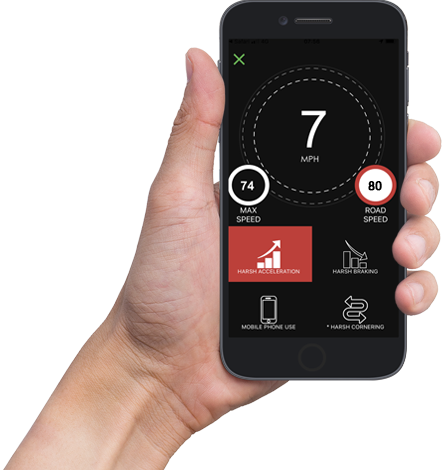
With MyMiX Tracking, you can maintain many key fleet management benefits for all your vehicles, including:
If you want a cost-effective, easy-to-use solution to track vehicles without installing a hard-wired on-board computer or tracking device in a vehicle, then the MyMiX Tracking app is ideal. No matter the industry you operate in, if you manage non-core vehicles at any point in time or on a regular basis, you can use MyMiX Tracking to reduce blind spots. Non-core vehicles include:
Sub-contracted vehicles
Leased vehicles
Company cars
Grey fleets
Private cars
Short-term rentals for travel or maintenance
![]()
Each driver is identified as soon as they log into the MyMiX app. Once logged in, the driver will be associated with all trips, events, and positions unless the driver activates the ‘not driving’ toggle to stop tracking of that particular trip.
The app will track while the app is running AND the driver is logged in.
Can drivers opt-out of being tracked?
Drivers can log out of the app, and no trip will be recorded. Drivers can also use the ‘not the driver' toggle.
Trips begin when the phone recognizes speed, distance, and GPS lock. The phone can detect ignition in certain vehicles when connected to Android Auto/CarPlay or the vehicle's Bluetooth. This is part of the third-party integration and not under the driver's control.
Trips end based on a timeout with no movement or when a certain number of steps are taken. The timeout is configurable, but the number of steps is not.
Drivers get in-cab, real-time alerts for events such as harsh braking, hard acceleration, harsh cornering, mobile phone use, and speeding.
For best GPS data acquisition, the phone should be mounted on the dashboard of the vehicle. In addition, the mobile device should not be in power save mode since the MyMiX app has to run in the background to work effectively.
The app is available for both Android (Android 6 “Marshmallow” or higher) and Apple users (iOS 12.1 or later and compatible with iPhone, iPad and iPod Touch). Huawei is not supported.
With MiX by Powerfleet, you can closely monitor and manage driver behavior and vehicle performance. Within minutes of installation, you can track your fleet, monitor your drivers’ behavior, and reduce the time and money you spend on vehicle maintenance, fuel costs, payroll, unauthorized vehicle use, and more.
You pay one flat subscription fee and a low shipping and handling fee. No extra cost for installation or value-added services.
We can ship the fleet tracking device to you for DIY installation, or you can have a professional installer come to your business to install it for you. It’s your choice.
An intuitive dashboard gives you insight into fuel efficiency, trips, events, costs, utilization, and more.
You’ll be instantly notified when a fuel-wasting event occurs, including over-revving, speeding, and excessive idling so that you can take immediate action.
You can reduce wear and tear on your fleet’s vehicles by improving poor driver behaviors. You can also set up service and licensing reminders to keep your fleet running smoothly and avoid late fees.
You can set up geo-fences that let you verify your driver’s shift details such as work sites they’ve visited, their home, and popular lunch spots.
Keep better track of trip classifications, eliminate erroneous payments for unauthorized trips with geo-fencing, and make payroll more accurate.
By tracking and monitoring your fleet’s vehicles and drivers, time spent in specific areas and routes can be used quickly to see if resources are being over-used or under-used.
![]()
"We rely heavily on MiX Solution to help us keep tabs on our vehicles and staff, and to ensure everyone is driving safely."
--Bobby Frisch, Co-Owner of Frisch & Sons
“One of the upfront benefits that surprised us was how much more efficient our routes became. While having the means to successfully reduce speeding, our drivers also finished their deliveries much more quickly. Our delivery efficiencies have gone up almost 40%.”
-- James Clancy, President, Avita Coffee
“Safety is Archrock’s top priority, and MiX by Powerfleet unquestionably helped us identify and reduce or eliminate unsafe driving behavior – leading not only to significant dollar savings, but also helping to improve our overall safety profile.”
--Grady Kelly, Senior Manager: Asset Management, Archrock
Your device will be shipped to you, simply register, install, and go. Or choose professional installation, and an installer will contact you to arrange a time.
By combining telematics with additional tools, our fleet management solutions give you actional information to help you solve complicated, driver- and vehicle-related issues. We can help you reduce the risks and challenges of running a fleet, from high fuel costs to driver safety to costly maintenance and repairs. With a fleet GPS system with on-board hardware and software working together, you’ll have 360-visibility on all the vehicles in your fleet.
No matter what type of asset you need to track, we have a GPS device for that purpose. Whether you are tracking five vehicles or 500+ vehicles, we’ve got you covered. Simply choose the one you want, purchase it online, install, and you are on your way.
MiX Fleet Manager – offers you unlimited access to information about your drivers and vehicles with tools and reports to maximize your return on investment (ROI). It includes a sophisticated on-board computer that gathers and sends valuable data about your drivers and vehicles. MiX Asset Manager – tracking and locating technology that can be used to track a variety of assets. You can choose from a tracker for assets with a dedicated power source, a wireless, battery-operated tracker for assets with no power source, and a wireless locator for non-powered assets.Our GPS fleet trackers have been used for fleets as small as five vehicles to as large as 4500, from landscaping to oil and gas industries. Our customers have seen reductions in harsh braking and acceleration events, reductions in excessive speeding, and reductions in excessive distances driven.
Alerts/Notifications
Asset Tracking
Asset Activity Tracking
Asset Location Tracking
Asset Audit Trail
Asset Check-in/Check out
Driver Management
Historical Reporting
Mobile Tracking
People Tracking
Real-Time Tracking
Routing
Status Tracking
Territory Management
Vehicle Tracking
Alerts/Notifications
Asset Tracking
Asset Activity Tracking – no
Asset Location Tracking – no
Asset Audit Trail – no
Asset Check-in/Check out – no
Driver Management
Historical Reporting
Mobile Tracking
People Tracking – no
Real-Time Tracking
Routing – no
Status Tracking
Territory Management
Vehicle Tracking


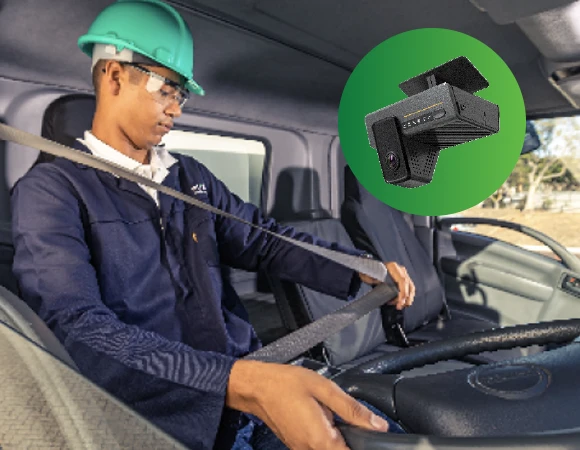
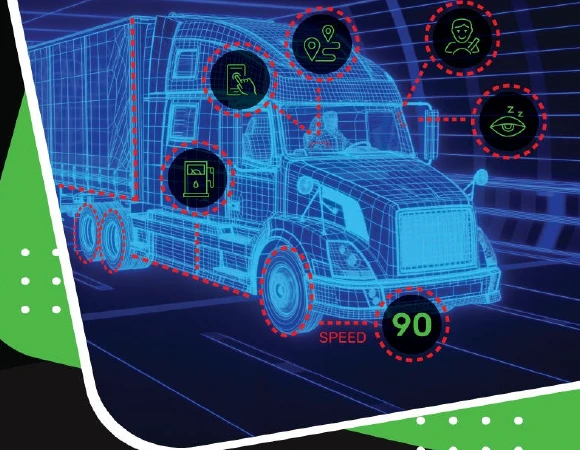
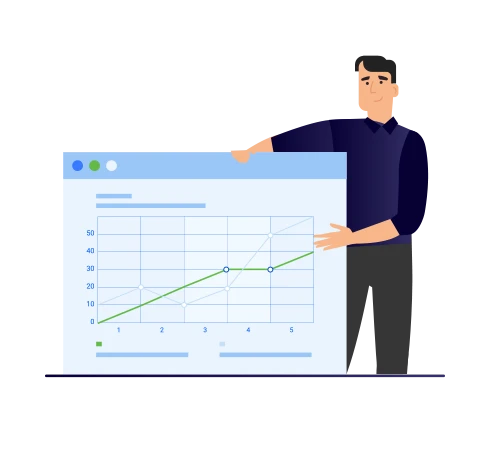

Fleet management embraces an integrated approach to telematics
that offers far more than viewing your vehicles on a map.
By combining basic telematics with additional tools or enablers, fleet management solutions deliver actionable intelligence to solve complex vehicle-and driver-related problems.
What Is the Purpose of Fleet Management?
Simply put, the purpose of fleet management is to keep track of and manage the location and condition of fleet vehicles and other fleet assets. Whether you own a business with a small fleet or manage a large fleet, you need insight into where your fleet vehicles are, how well, or not well, they are running, and if they are being used appropriately. And, you need to manage the entire life-cycle of your assets while reducing risks, improving fleet efficiency and productivity, and making sure your fleet is in compliance with rules and regulations.
Let us explain the benefits of fleet management.
Vehicle telematics is a system of on-board hardware and software working together to gather, store and transmit information – or data – about vehicles and drivers.

Read more
In-cab video can help identify and improve poor driver behavior – the leading cause of crashes and fatalities on our roads.

Read more
The same solution with journey management can help optimize routes and driving habits, resulting in savings of up to 15% on fuel.

Read more
Where non-motorized assets are concerned, a fleet solution helps to monitor the locations of assets, thereby reducing theft and increasing utilization.

Read more
In the U.S., an integrated ELD (electronic logging device) solution can facilitate compliance with the ELD Mandate and save fleets thousands of dollars in safety-related claims.

HOW FLEET MANAGEMENT FEATURES IMPROVE FLEET SAFETY:
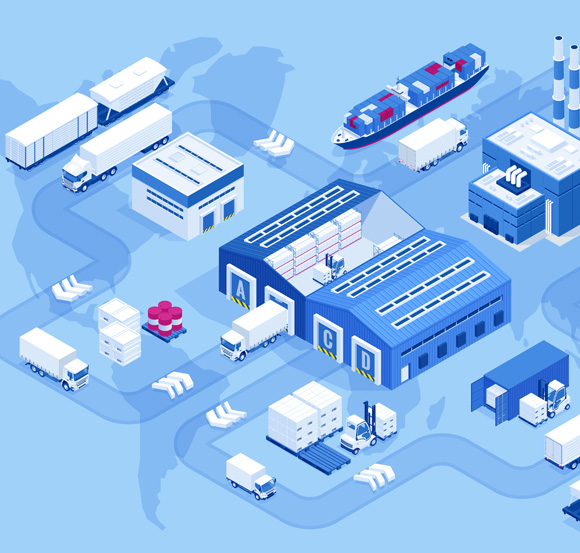
HOW FLEET MANAGEMENT FEATURES IMPROVE FLEET EFFICIENCY:

HOW FLEET MANAGEMENT FEATURES IMPROVE FLEET COMPLIANCE:

HOW FLEET MANAGEMENT FEATURES IMPROVE FLEET SECURITY:
Real-time insight into your fleet lets you make decisions that immediately impact fleet performance, rather than wait until after the fact.
While you cannot control fuel prices, strictly controlling fuel consumption can help control your fuel costs. MiX by Powerfleet fleet management solutions give you insight into the fuel consumption of your fleet and cut costs by notifying drivers in real-time when their driving behavior is causing them to waste fuel.
While real-time information lets you make quick decisions, automated reports give you data you can analyze, see trends in, and develop strategies around to solve long-term issues. Automating reports eliminates human error and saves time.
Fleet management benefits include the ability to schedule preventative maintenance that improves your vehicles' health, keeps them running longer, and reduces unexpected breakdowns that cost you time and money.
When journey management is online, everything such as journey requests, approvals, and monitoring is in one easily accessible, integrated system. It improves safety, customer service and ensures compliance.
Fleet management helps you plan better routes that cut costs, optimize your business, and save gas. You can easily make rerouting decisions on the go.
Of course, you have trusted, highly skilled drivers, but driver fraud can happen, even if there is no malicious intent. No matter how much you trust your team, it's a good idea to track, analyze, and prevent the possibility of fraud, whether it be inadvertent or on purpose. Fleet management software can help you detect anomalies and make data-driven conclusions.
Fleet management telematics not only helps you keep your vehicles running smoothly, but it also helps keep your drivers safe. Poorly maintained vehicles endanger your drivers and others on the road. Poor driving also endangers them and others. With alerts to keep your vehicles maintained and analytics to help identify poor driving habits, you can help improve driver safety.
When you implement fleet management telematics, some insurance companies may offer your fleet a discount or other financial incentives since they know your fleet is likely to have fewer accidents and improve its safety record.
Since fleet telematics helps you reduce driver errors that cause accidents, you don't have the expense of extra costs caused by accidents, such as court claims, increased insurance premiums, and expensive repairs.
When you know where your fleet vehicles are located in real-time, how much longer they will be at their current task or job, and where they are scheduled to go next, you can quickly reroute when needed, add additional jobs, and respond to emergencies without disrupting other customers. You can increase your potential profits with more effective dispatching and fleet management.
A corollary to improved dispatching is improved customer service since a telematics system can help reduce wait times and improve arrival times for customers. You'll be able to provide effective, efficient service to all your customers, increasing the likelihood that they'll remain loyal to your brand and refer your business to others.
GPS fleet tracking your employee timesheets is more accurate, making your invoices and labor costs more accurate. This also helps you ensure that your drivers are not wasting time on the road and helps reduce timesheet fraud.
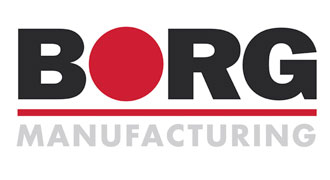
Case Study
Based in New South Wales, Australia, Borg Manufacturing is a leading manufacturer of decorative wood panel surfaces and made-to-order kitchen cabinet doors and benchtops. Despite being an extremely successful operation, Borg was aware of a high rate of unsafe driving and vehicle rollovers – especially in deliveries that took vehicles over hills and through forests. Airco, a MiX by Powerfleet channel partner based in Sydney, recommended MiX Fleet Manager, a fully integrated fleet management solution that would help to meet the company’s safety, efficiency and compliance needs.
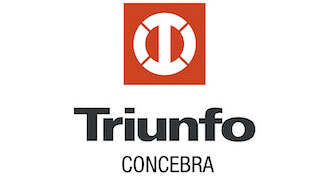
Case Study
When Triunfo Concebra, a Brazilian-based highway concession company, required a more efficient and less costly way to manage their busy fleet of 300, they turned to the MiX Fleet Manager Premium solution. This sophisticated solution has been closely monitoring both vehicle- and driver-related activities, which has led to, among other things, an impressive decrease in fuel consumption, maintenance costs and road accidents.

Case Study
Reading-based bus operator, Reading Buses, chose MiX Fleet Manager, and saw fuel- and driving-related results in nine short months.
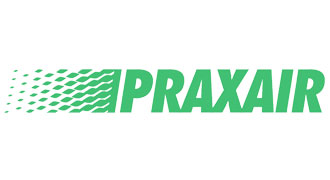
Case Study
The MiX by Powerfleet system that Praxair chose provided peace of mind, as well as the ability to monitor compliance with its strict driver codes in real-time.
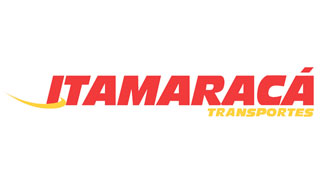
Case Study
Itamaracá Transportes from Brazil chose MiX Fleet Manager Premium to reduce fuel consumption and carbon emissions through more efficient driving.
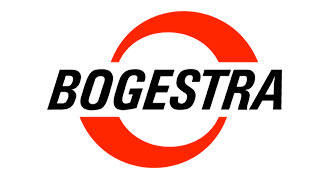
Case Study
German bus operator BOGESTRA AG chose MiX to help save fuel, reduce carbon emissions and create a more comfortable journey for their passengers.
When you manage fleets, drivers, schedules, and costs, you face many challenges. That's where MiX by Powerfleet comes in. We provide technology and software solutions to help you reduce costs, improve driver safety, reduce risk, increase productivity, and schedule preventative maintenance to minimize downtime. Our solutions put information at your fingertips, so you can solve problems quickly.
Fleet managers are tasked with vehicle acquisition, fuel management, fleet safety, compliance, vehicle maintenance, and controlling costs, to name just a few. And there are numerous other tasks they need to handle in order to have a well-run fleet. Their challenge: finding enough time to do all this and more without being suffocated by information overload.

Managing a fleet involves reviewing and analyzing a lot of data, separating out the important information, and using it to make informed decisions. Wading through so much information takes a lot of time, and it is quite likely that some critical information will be missed. One of the main benefits of fleet management software is that it can help you weed out unimportant information and generate reports that contain the vital information you need.
Fuel accounts for a big chunk of any fleet's budget. Using GPS tracking systems can reduce fuel costs by approximately 10%. Our tracking solution alerts you to how often specific vehicles are idling and overall idling across your entire fleet. You can monitor performance, track improvements, and educate your drivers on why they should reduce their idling time.
In addition, with our GPS tracking solution, you can optimize your fleet's routes, reducing total miles driven. With MiX by Powerfleet, we put you in the truck with your driver. You can see their location and their destination in real-time and monitor the traffic and the weather. With this information, you can improve your total fleet efficiency and reduce fuel expenses.
With MiX by Powerfleet, you can use telematics to improve your customer service. Using our GPS tracking solution, you can make sure your drivers stick to their schedules and routes, so they get to every appointment or make every delivery on time. If something goes wrong, with the visibility we give you, you can send the vehicle that is closest to a job, while rerouting other drivers, so that they all get to your customers more quickly. your drivers stick to their schedules and routes, so they get to every appointment or make every delivery on time. If something goes wrong, with the visibility we give you, you can send the vehicle that is closest to a job, while rerouting other drivers, so that they all get to your customers more quickly.
With MiX Asset Manager, you track and locate your assets in real-time, preventing potential theft and misuse of your trucks. You can find them wherever they are with a live information stream, or see where they've been over time with trip replays and records of distances traveled and previous events. You can even view asset diagnostics, such as signal strength and battery status, and export a list of all active assets. You can also track assets such as cable stock, generators, bins, ladders, and more.
One of the biggest problems fleet managers face is driver retention and turnover. This often happens due to disciplinary issues, such as poor driving or too many accidents. With MiX by Powerfleet, you can put in place a training system that helps your drivers improve and reduces fleet labor costs and turnover.
Using GPS tracking data, you can help your drivers drive better and create a safety culture for your fleet. This can decrease insurance premiums as well as reduce driver turnover.
No matter why you are implementing driver training – to improve safety, manage risk, or increase driver job satisfaction – your fleet's profitability increases when you use a consistent, relevant driver training program. Your tucks last longer, repair costs will lower, crash risk will reduce, and driver turnover will decrease.
Preventative maintenance is one of the best ways to reduce maintenance costs over the lifetime of your vehicles. MiX by Powerfleet takes the guesswork out of maintenance scheduling. You can easily automate the process to send alerts when it's time for maintenance for each vehicle. That way, you can schedule your maintenance ahead of time and won't be surprised by sudden breakdowns. This will help keep your trucks on the road and not in the shop.
Our telematics solution gives you access to engine diagnostic data such as fuel usage and fill-ups, odometer readings, engine temperature, oil pressure, RPM, idling, exact engine hours, and more. This makes your maintenance schedules more accurate, so you can avoid paying for service on lightly used vehicles and neglecting vehicles that need servicing more often.
Vehicle fleet management solutions from MiX by Powerfleet has many benefits. You will know the exact location of each vehicle so you can meet deadlines and your customers' expectations. You can also reduce operating expenses by optimizing your drivers' routes, leading to reduced fuel use and overtime costs. Fleet managers can change routes in real-time so that their drivers can avoid traffic, construction, and accidents, saving time, and reducing downtime.
Read more …The Benefits of Fleet Management
Yes.
Yes.
Driver scores are collected and calculated across a 7-day period (excluding the current day) and then ranked in order of best to worst.
If two drivers have exactly the same score, their rank will be determined according to how the sort algorithm has sifted the data. Therefore, one may be 2nd and the other 3rd. Keep in mind that the sort algorithm goes into decimals, so exact scores are possible but highly unlikely.
Drivers are only ranked against other currently active drivers. For example, if a driver is on leave, the number of active drivers will be less in terms of the group against which the driver is ranked.
No trips. In other words, the driver has not traveled any distance during the 7-day time period.
MiX Integrate is an integration platform enabling the transfer of data for use outside of MiX Fleet Manager. The integration consists of RESTful APIs as well as data feed mechanisms to support specific use cases.
MiX Integrate includes swagger documentation for all endpoints that are currently available. This includes positional, event, and trip data as well as driver and asset data amongst others. The swagger documentation also provides a sample of properties that are available as part of the specific method thus providing further insight into exactly what is returned.
Absolutely – you can access historic and real-time data based on information from the tracking device.
No. It applies to both moveable and fixed assets.
No.
Timeline streams and information in fleet tracking are important for real-time visibility, historical data analysis, performance monitoring, and event tracking, enabling better decision-making and operational efficiency.
Read more …MiX by Powerfleet FAQ